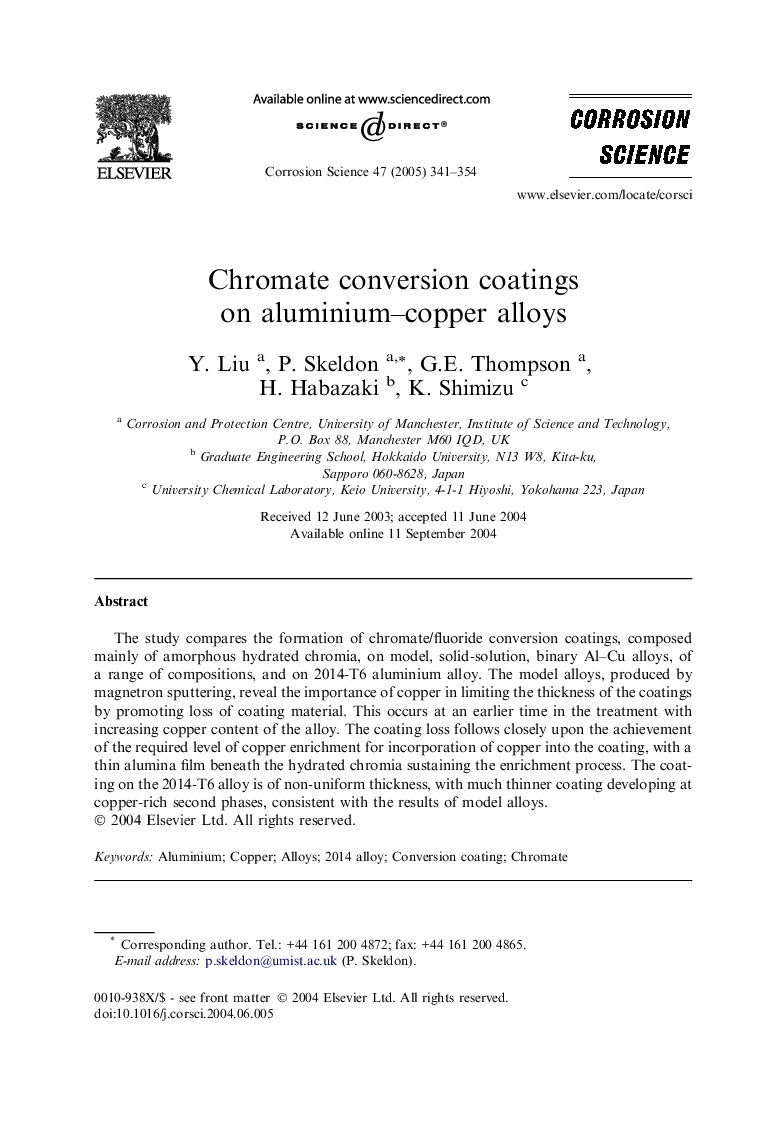| Article ID | Journal | Published Year | Pages | File Type |
|---|---|---|---|---|
| 10628553 | Corrosion Science | 2005 | 14 Pages |
Abstract
The study compares the formation of chromate/fluoride conversion coatings, composed mainly of amorphous hydrated chromia, on model, solid-solution, binary Al-Cu alloys, of a range of compositions, and on 2014-T6 aluminium alloy. The model alloys, produced by magnetron sputtering, reveal the importance of copper in limiting the thickness of the coatings by promoting loss of coating material. This occurs at an earlier time in the treatment with increasing copper content of the alloy. The coating loss follows closely upon the achievement of the required level of copper enrichment for incorporation of copper into the coating, with a thin alumina film beneath the hydrated chromia sustaining the enrichment process. The coating on the 2014-T6 alloy is of non-uniform thickness, with much thinner coating developing at copper-rich second phases, consistent with the results of model alloys.
Related Topics
Physical Sciences and Engineering
Materials Science
Ceramics and Composites
Authors
Y. Liu, P. Skeldon, G.E. Thompson, H. Habazaki, K. Shimizu,
